lect 8 2326 (copy)
1/46
Earn XP
Description and Tags
Name | Mastery | Learn | Test | Matching | Spaced |
|---|
No study sessions yet.
47 Terms
60 Hz full-wave-rectified is converted to higher frequency in the range of ____ to ______ Hz and then transferred to high voltage.
500 to 25,000 Hz
high frequency generetors powers that xray tube bc they operate on
single phase and give less voltage ripples, also it is small in size making it more portable.
There are 3main components of the x- ray unit:
(1) the operating console
(2) the high-voltage generator
(3) the x-ray tube
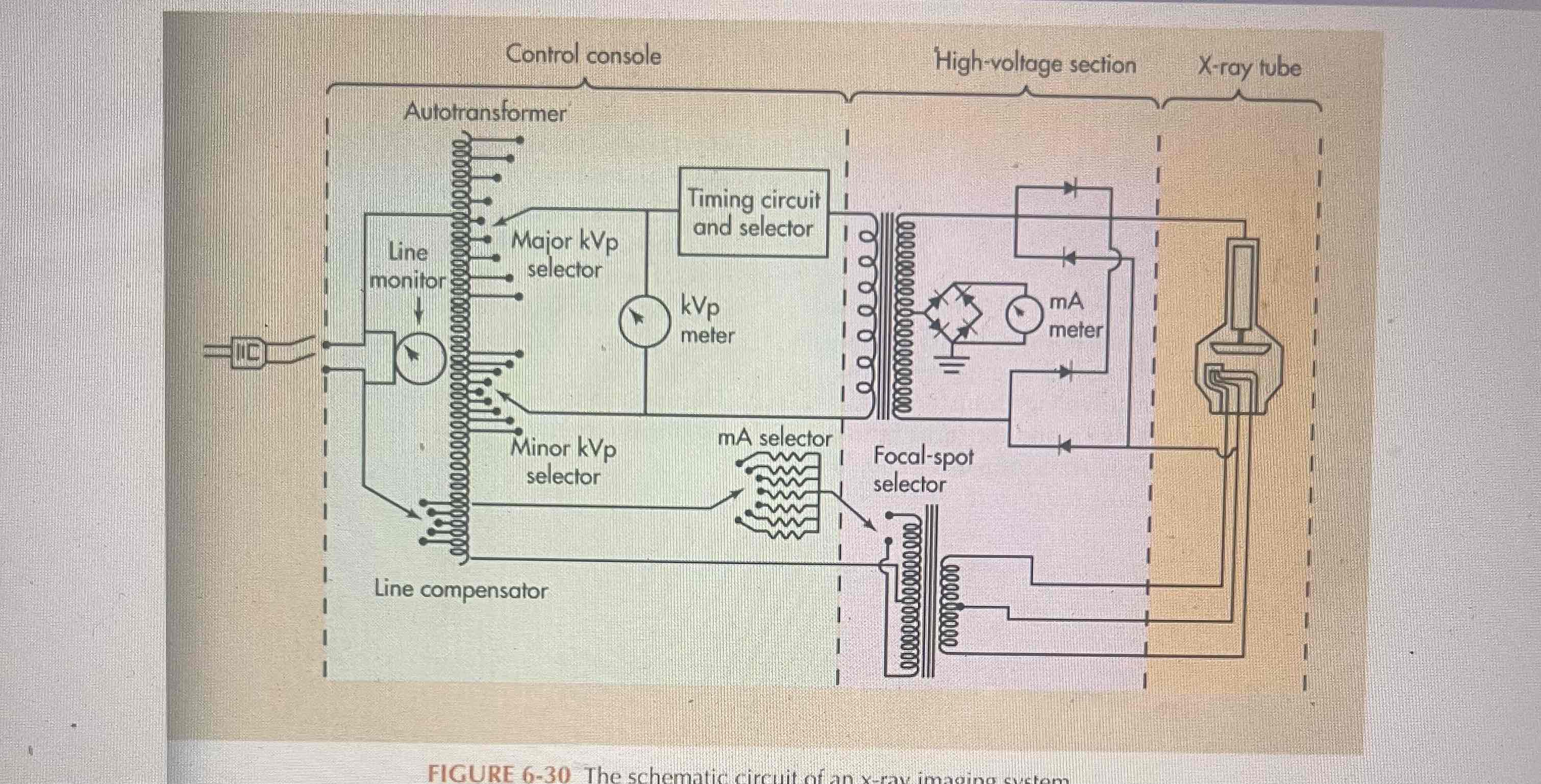
line voltage source
line voltage compensator
Autotransformer
KV meter or indicator
exposure switches
primary coil of the main transforme

secondary coil of the main transformer
mA meter or indicator
rectification system
x-ray tube

1
main breaker - this is where the alternating current comes from to power the circuit
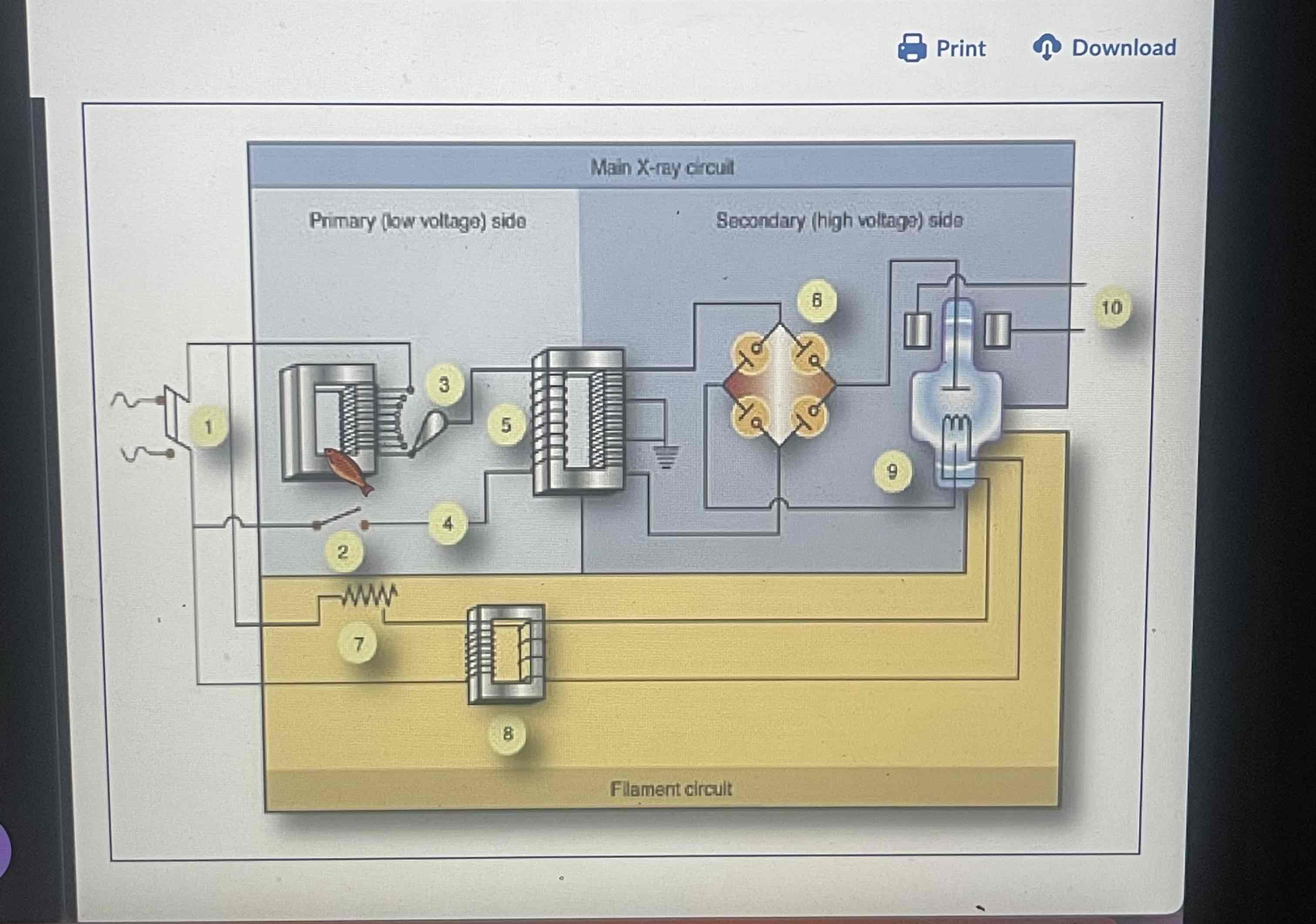
2
exposure switch - when you push the button to start an exposure this switch closes to start the exposure
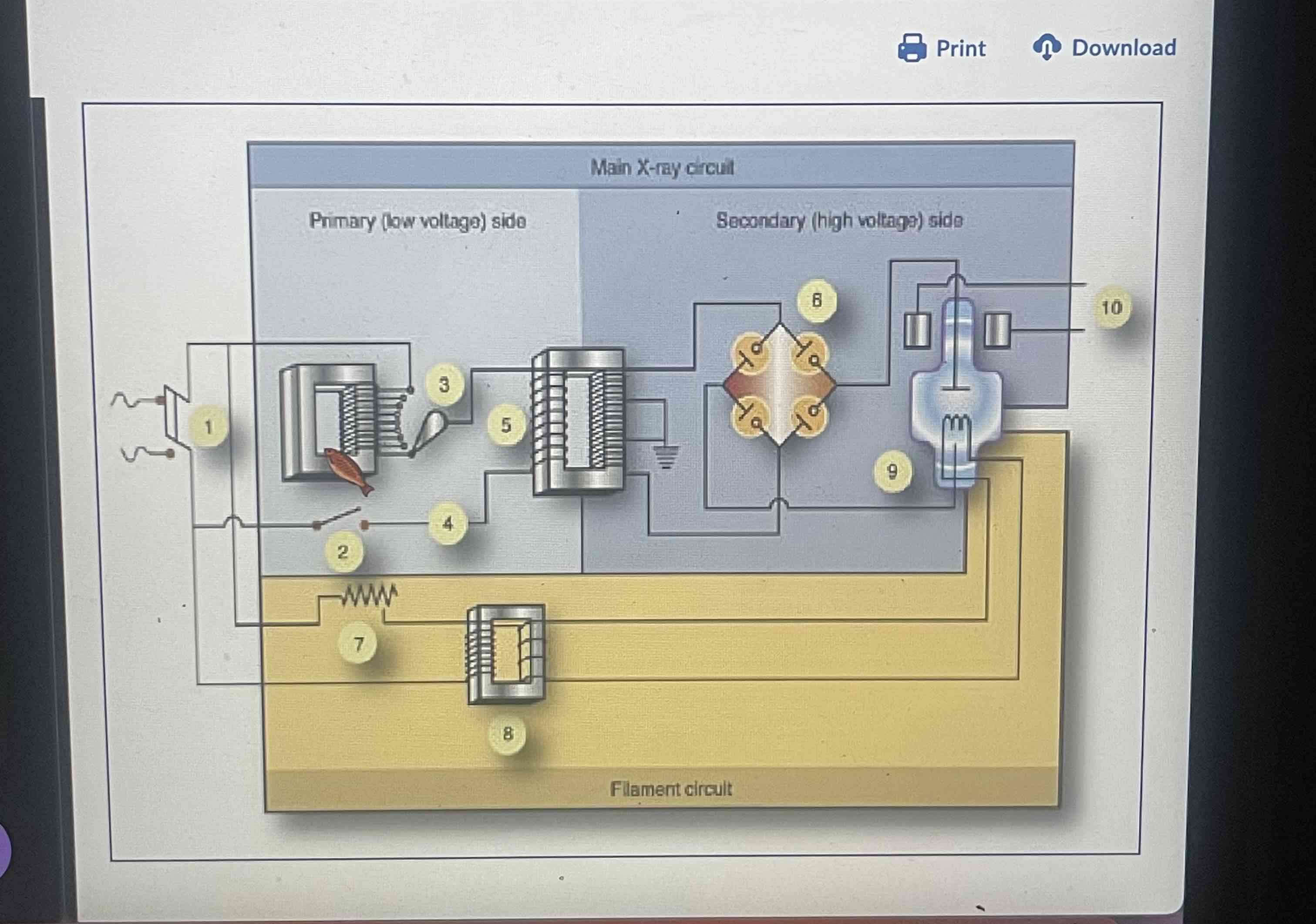
3
autotransformer - this is where you adjust the kVp for the exposure.
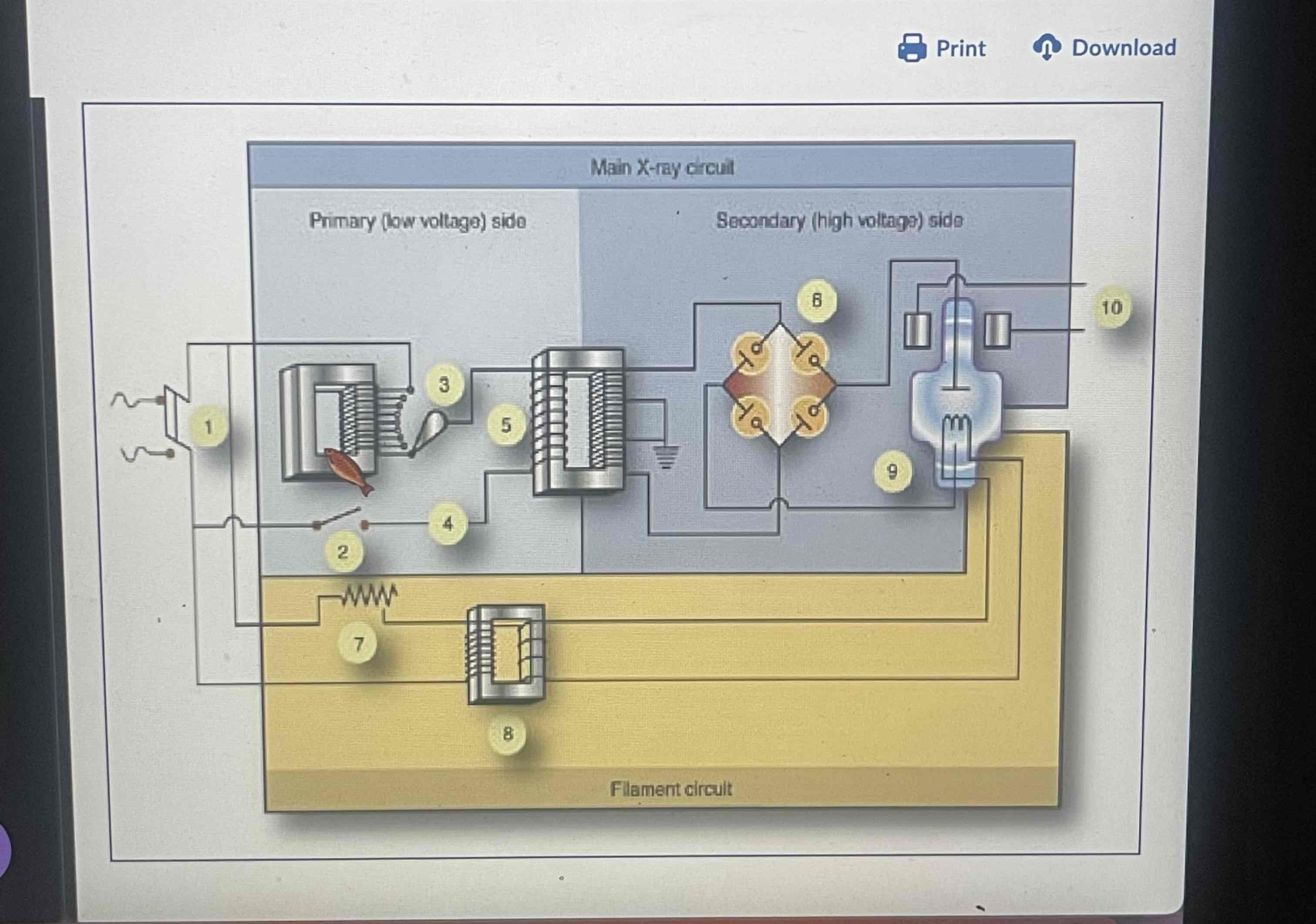
4
timer circuit - this part of the circuit stops the exposure
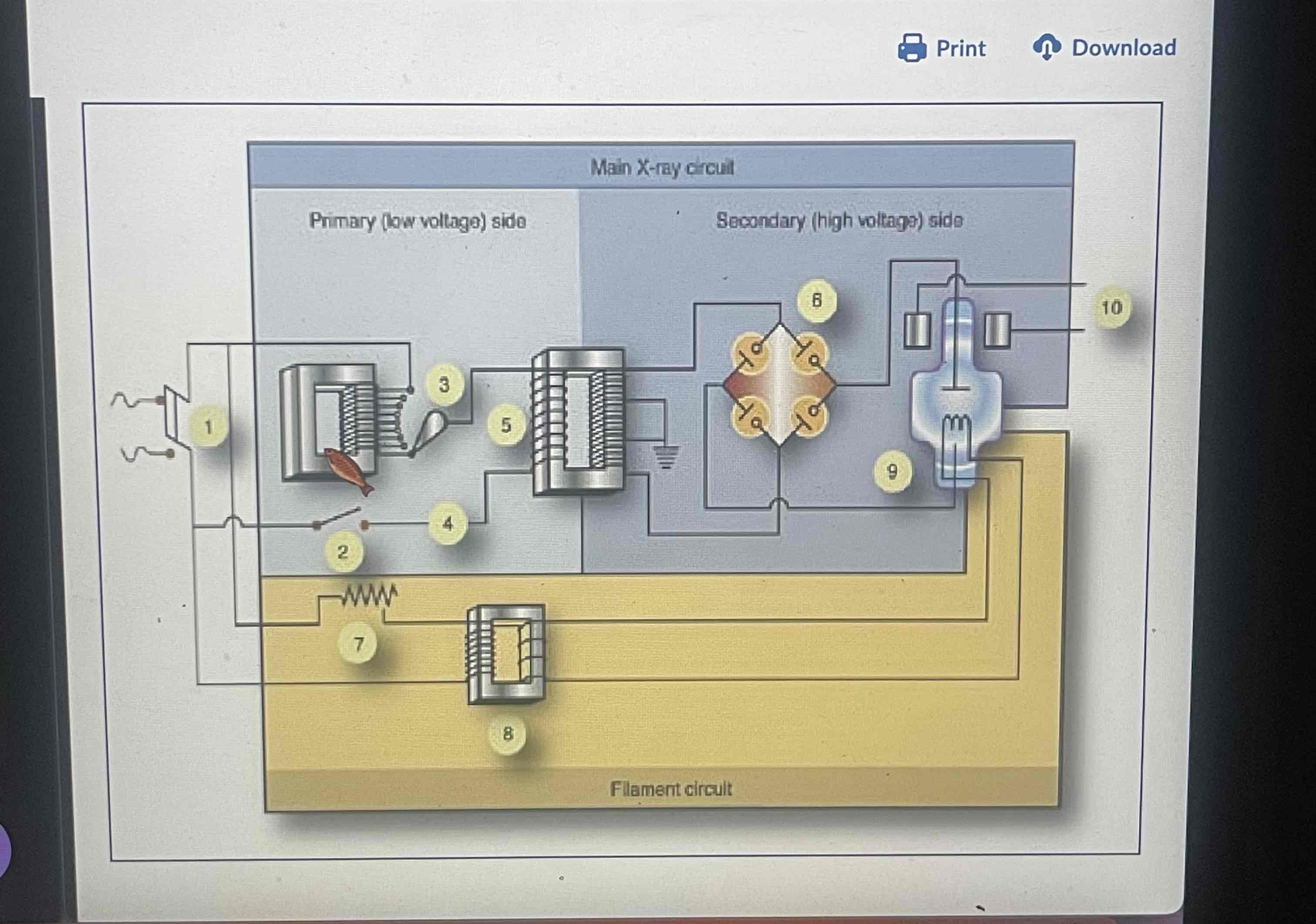
5.
high-voltage step-up transformer - this transformer bumps the
voltage up so that the x- ray tube has very high voltage to make the electrons have enough energy to form x-rays
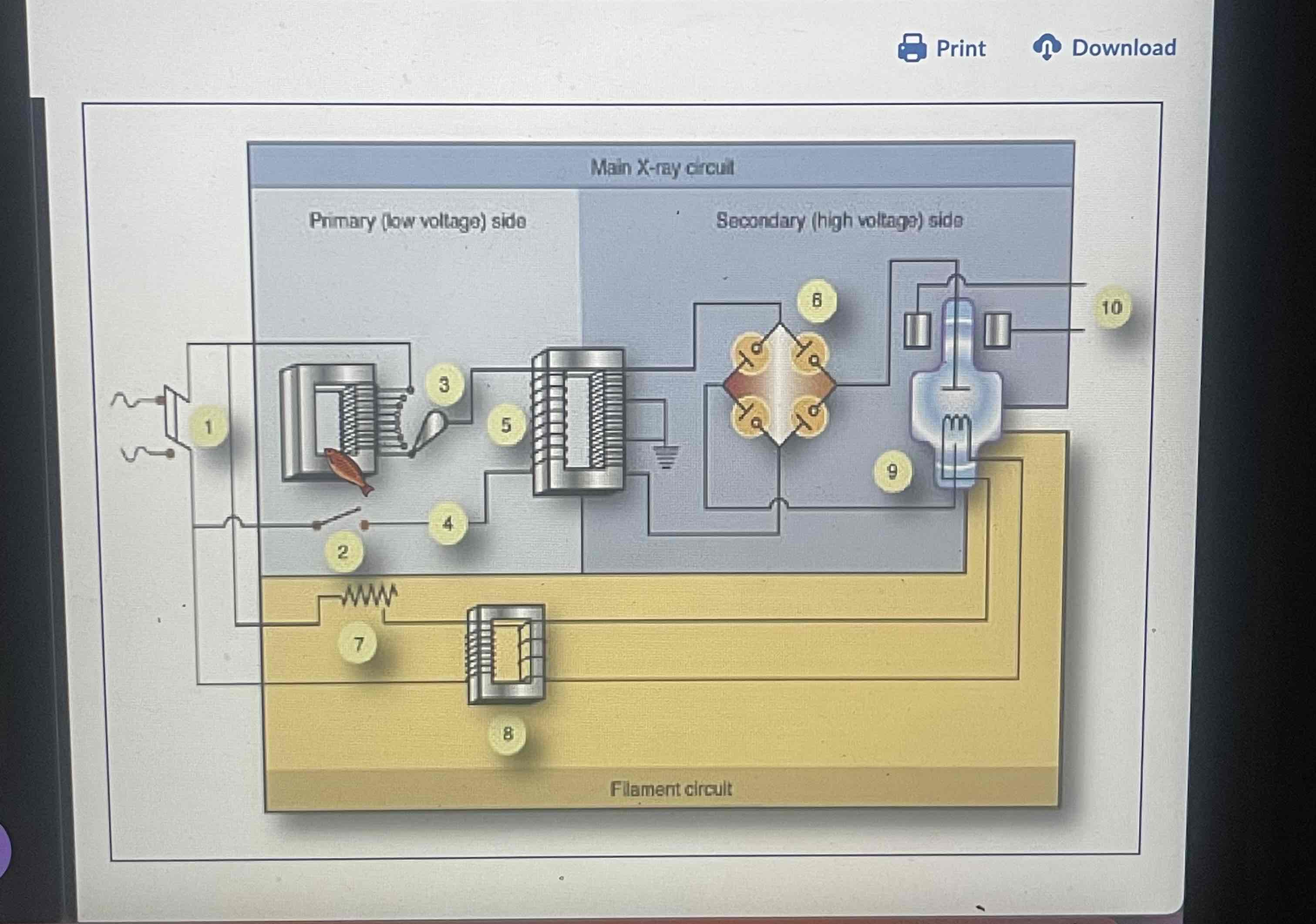
6
four-diode rectification circuit - this makes the current only go
in one direction through the x-ray tube.
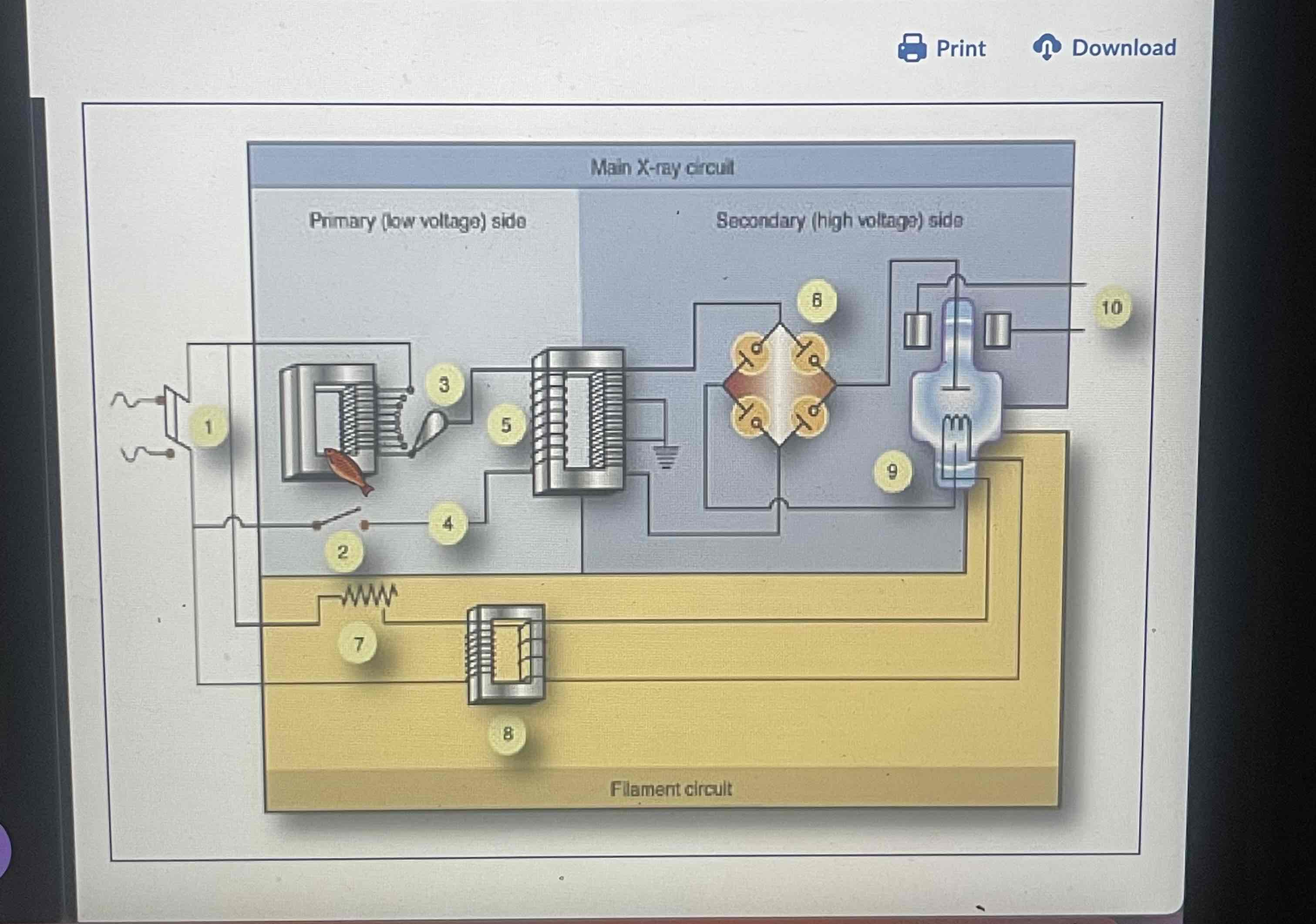
7.
filament circuit variable resistor - this variable resistor adjusts the current
going to the filament

8
filament step-down transformer - this transformer steps the voltage
down and therefore the current up.
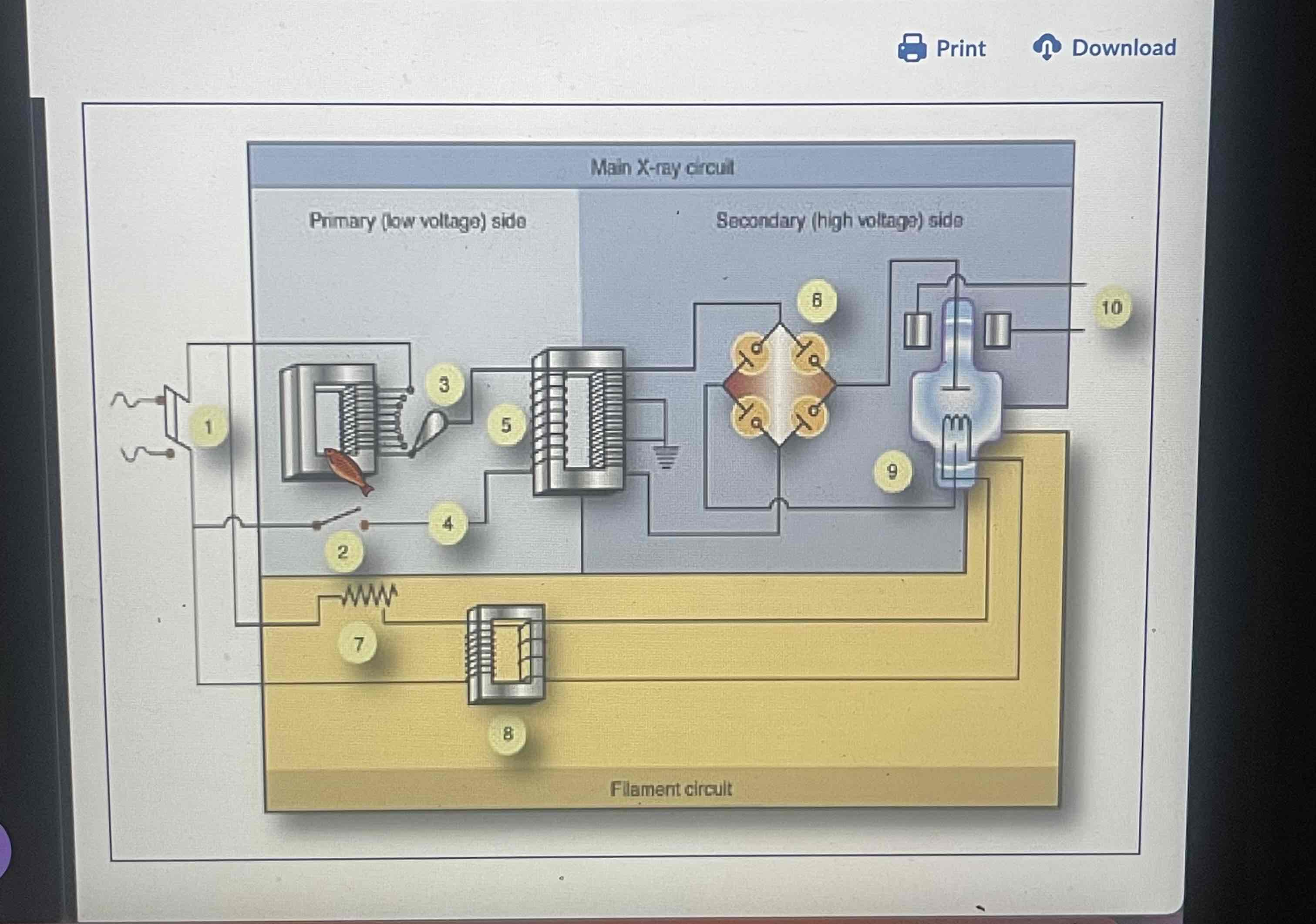
9
x-ray tube - this is where the x-rays are created.
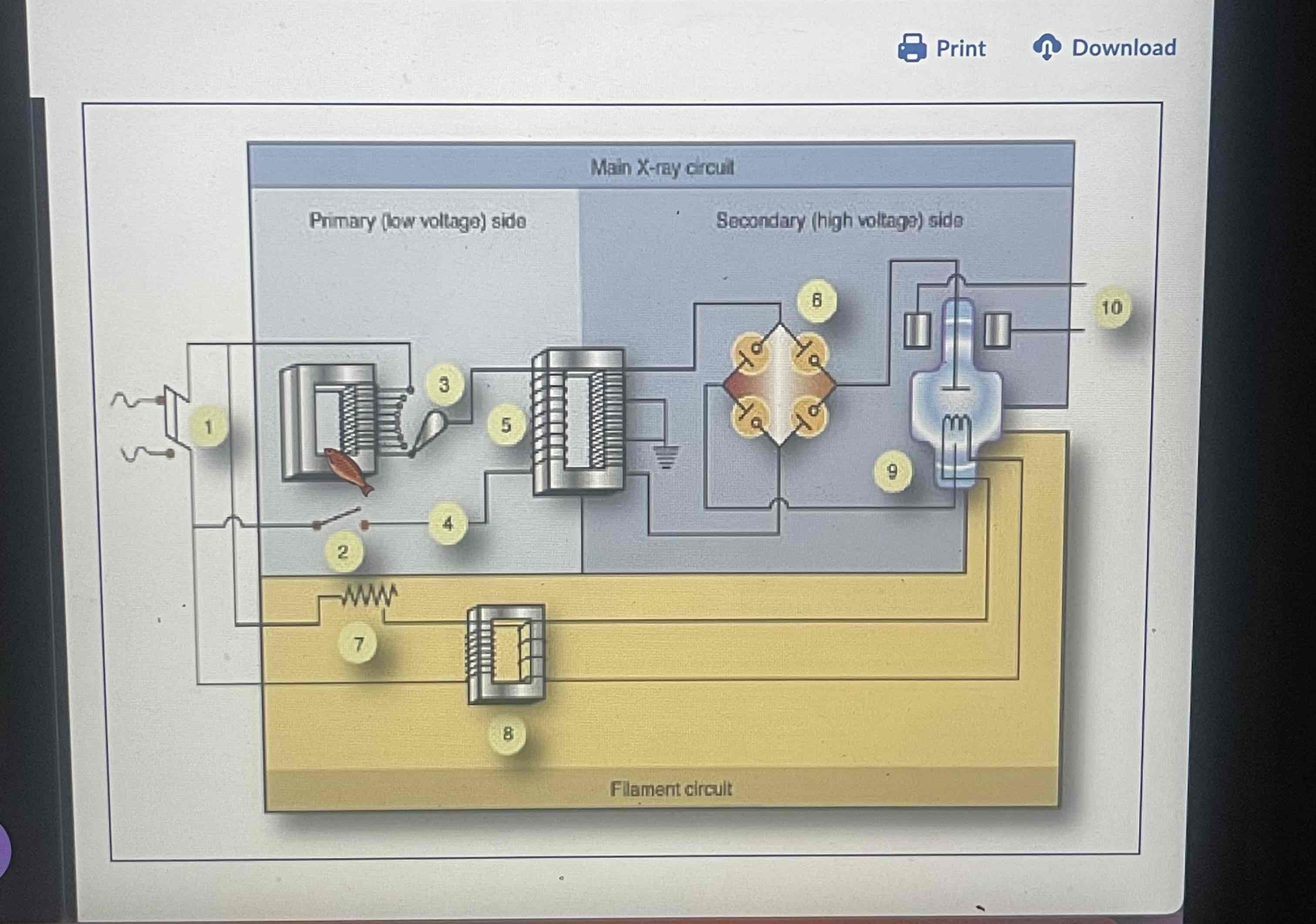
10
rotor stator - this rotates the anode.
The Low-Voltage Portion of the Main Circuit has the following
line voltage source
line voltage compensator
Autotransformer
KV meter or indicator
exposure switches
primary coil of the main transformer
line voltage source: controlled
by a wall (main) switch as well as the on/off switch on
the control panel.
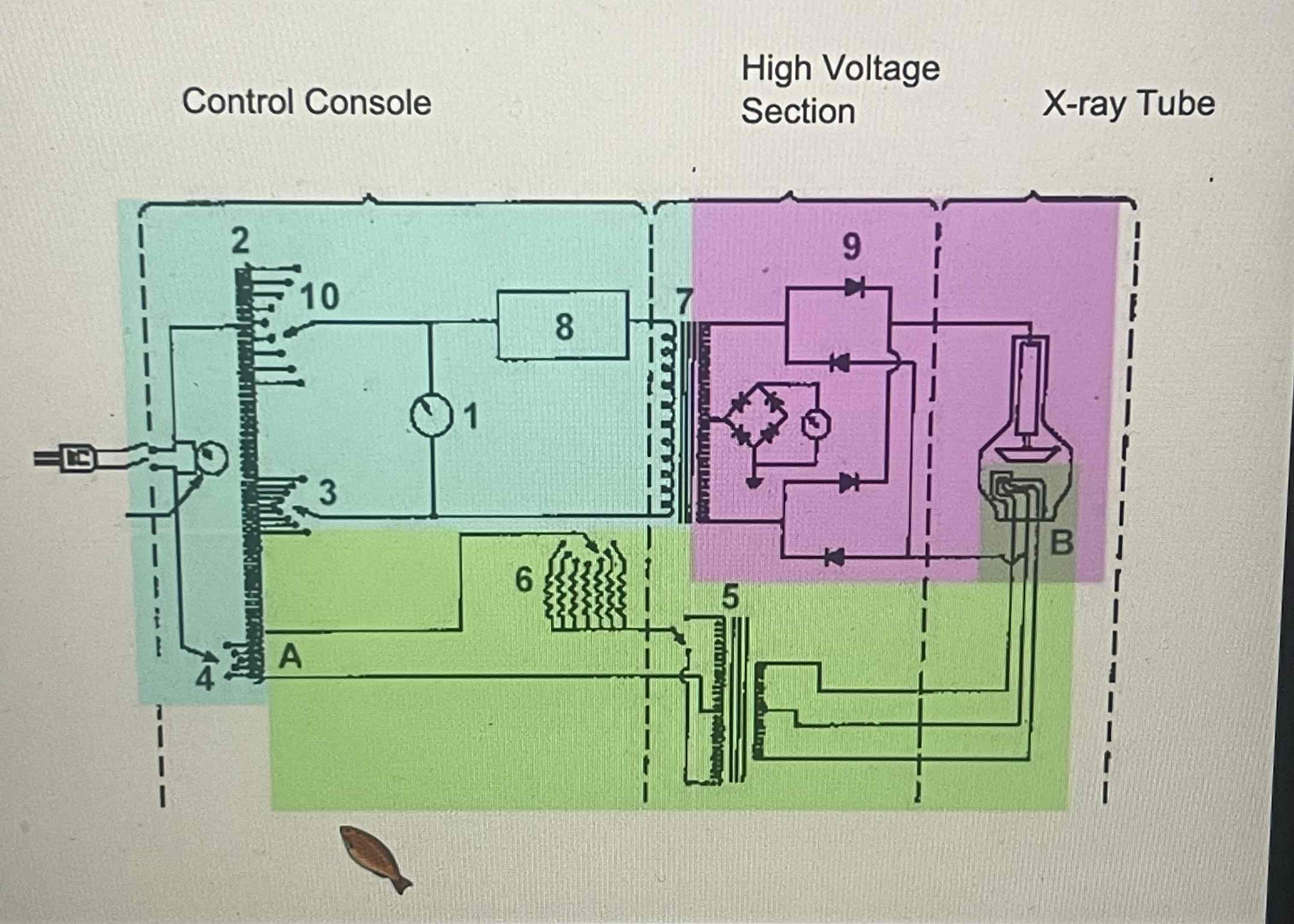
line voltage compensator: (#4)
automatically corrects the line voltage to the same value at all
times. This avoids variations in radiographic density which might be caused
by voltage fluctuations. Older equipment may have manual line voltage
correction.
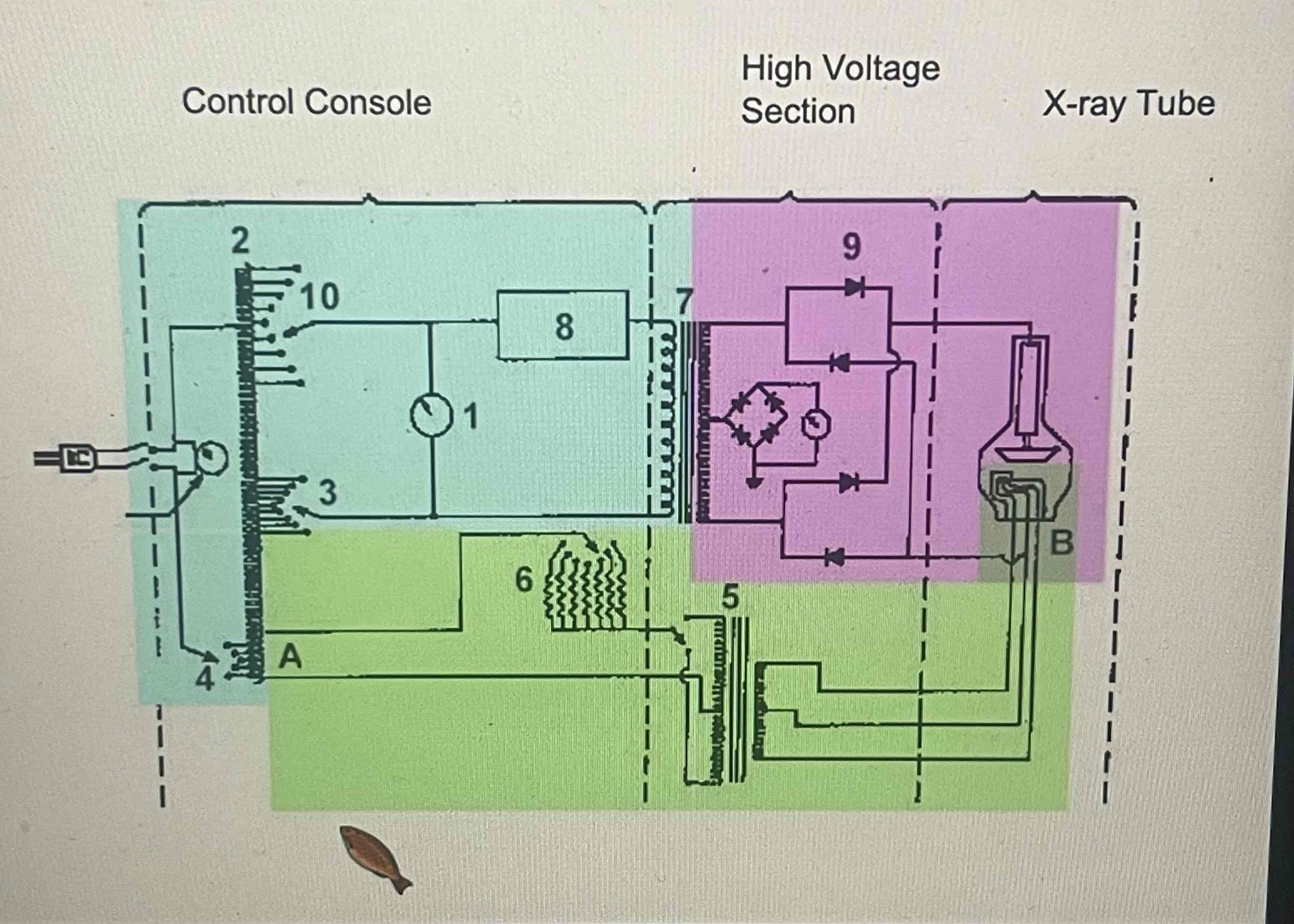
autotransformer: (#2)
acts as a KV selector and has connections to the major and minor
KV taps (connections), the line compensator, the timer circuit
and the filament circuit.
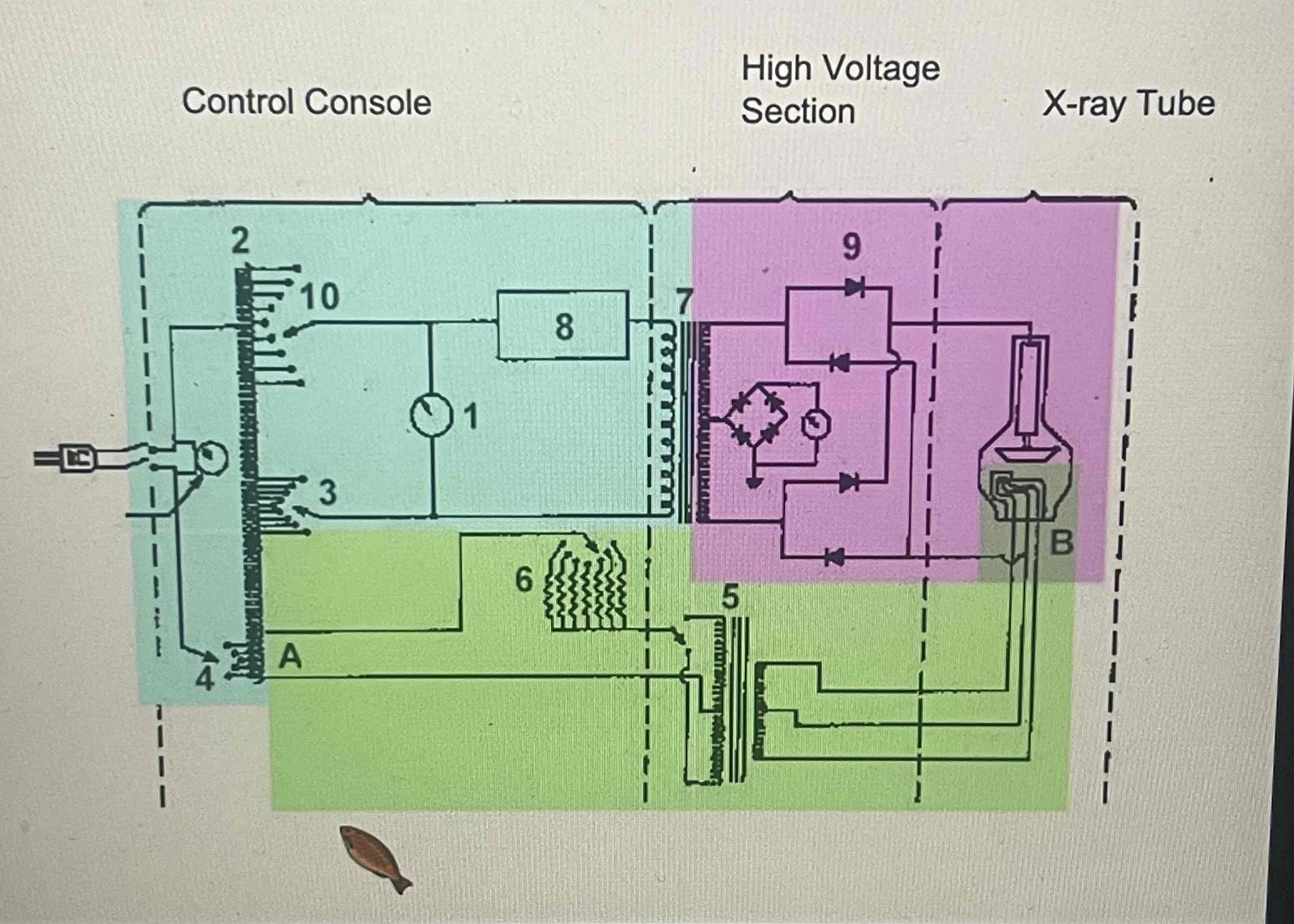
KV meter or indicator: (1)
often called a "pre-reading" meter/indicator because it is measuring
volts, but is calibrated to show the KV in the circuit after transformation
exposure switches:
usually two switches or a two-part switch. The "ready" function
boosts the filament temperature to cause thermionic emission, and also
energizes the induction motor which rotates the anode.
The " expose" switch begins the
exposure; the timer circuit terminates the exposure. However, as you
know, you can end an exposure prematurely by removing your hand from the "dead-man" exposure switch
In a main step-up transformer, the primary coil is the
low-voltage side of the transformer, while the secondary coil is the high-voltage side. The primary coil receives electricity at a lower voltage, which then passes through the transformer core and is "stepped up" by the secondary coil to a much higher voltage suitable for transmission or distribution.
The High-Voltage Portion of the Main Circuit has the following
secondary coil of the main transformer
mA meter or indicator
rectification system
x-ray tube
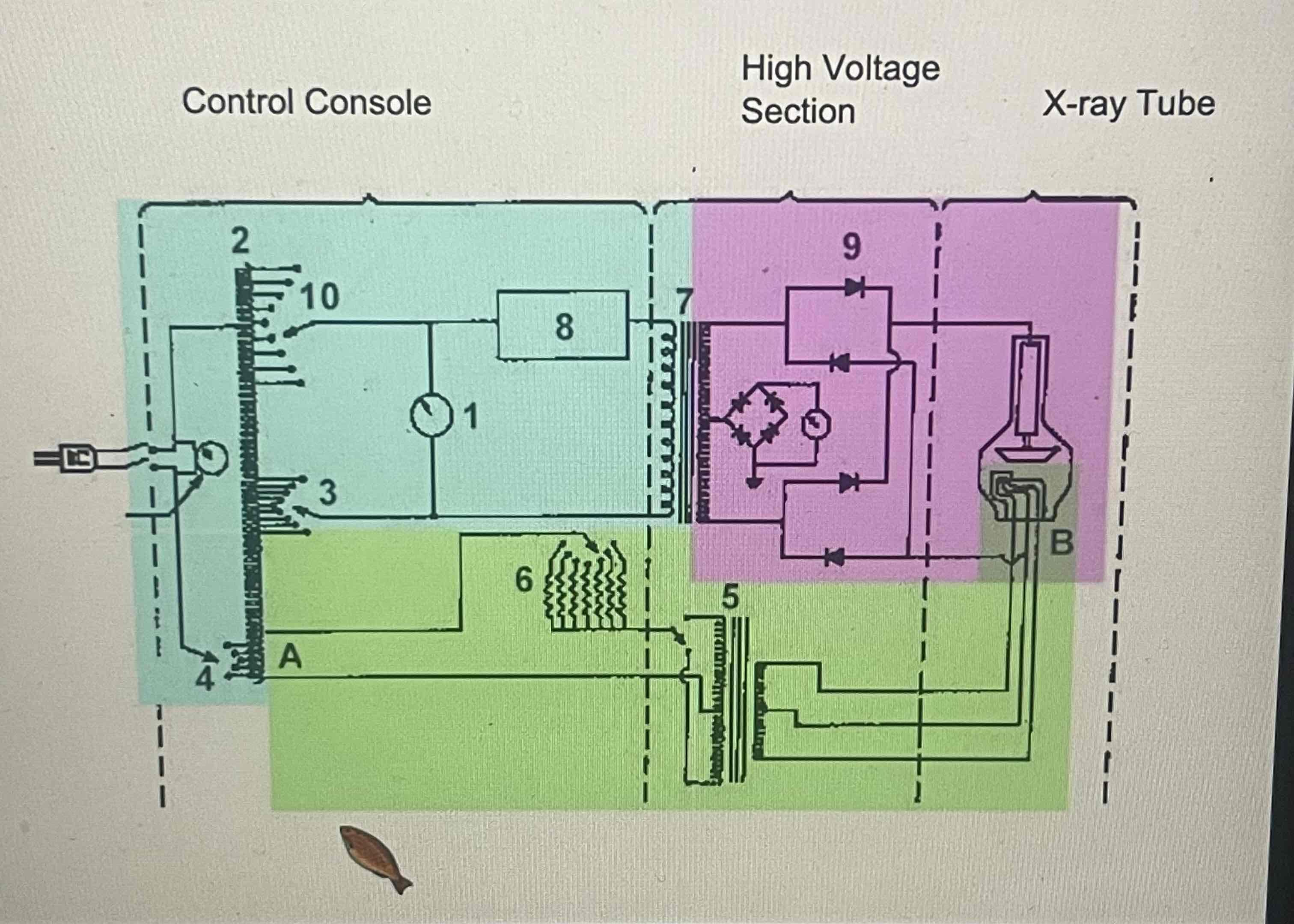
secondary coil of the main transformer (7):
the high-voltage portion of the main transformer. The turns ratio of the
main transformer is usually between 700 and 1000.
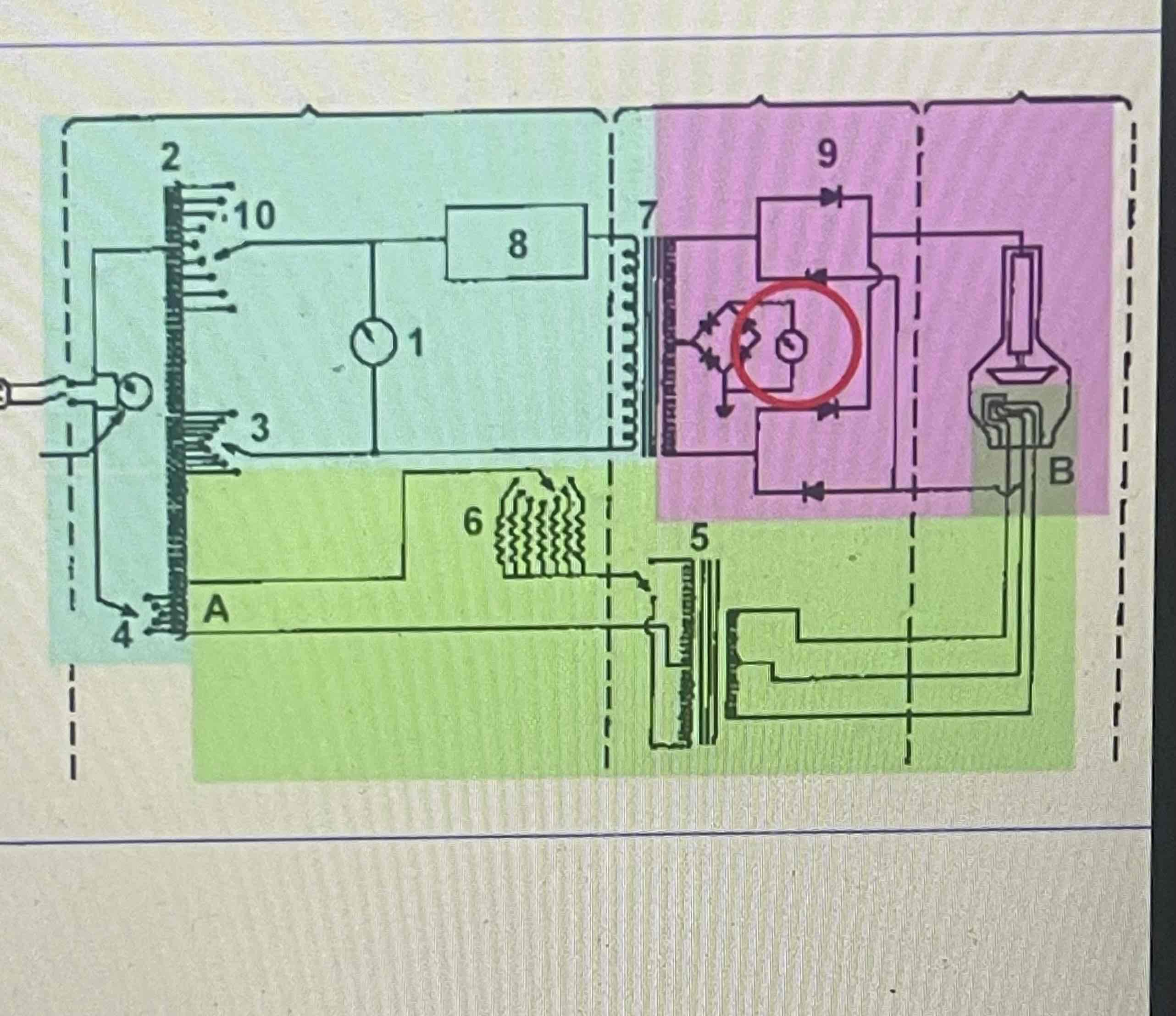
mA meter or indicator:
registers during exposure. This is usually one of two exposure indicators; the other is a tone indicating the end of the exposure.
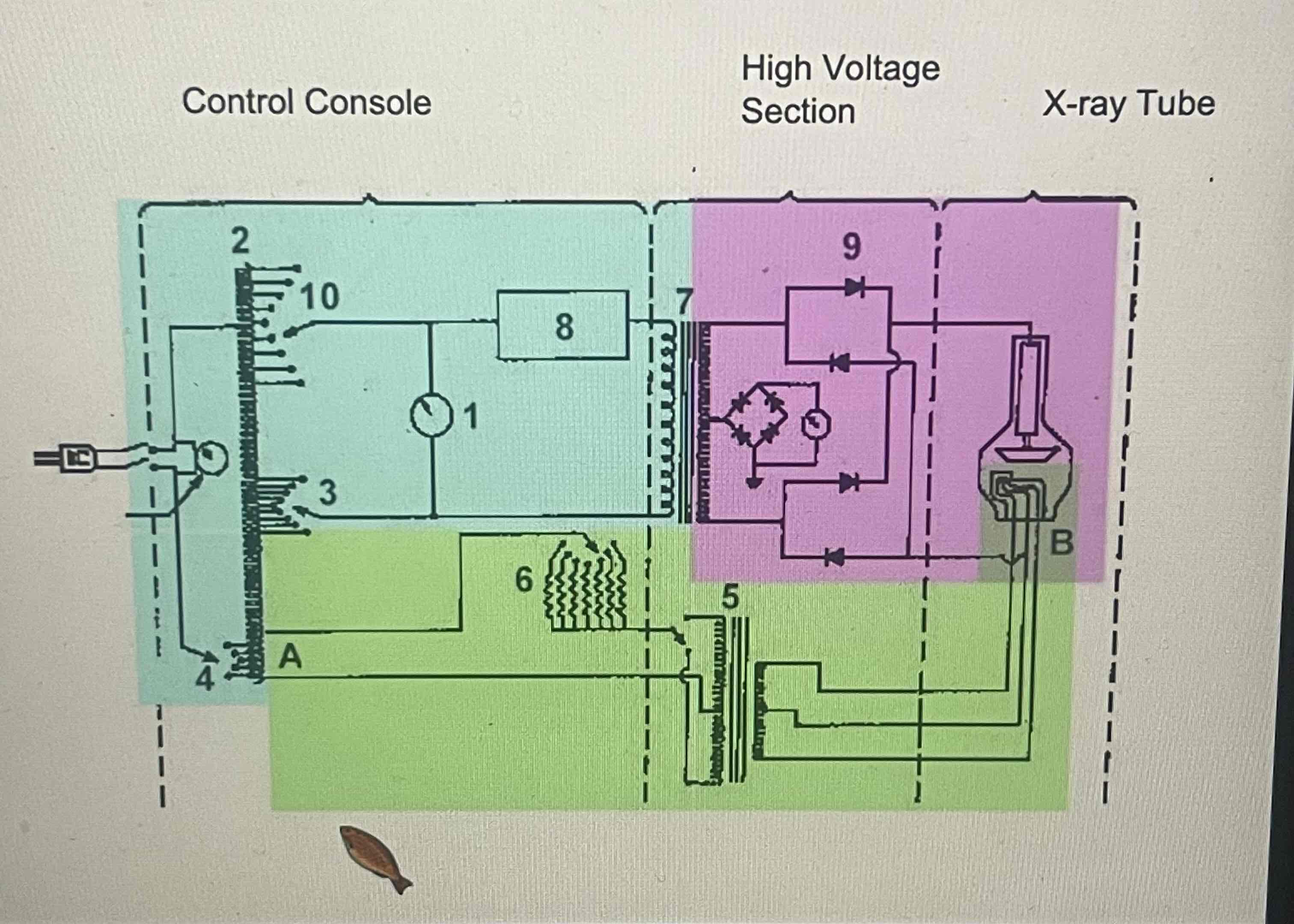
rectification system (9):
converts AC to DC. The minimum number of rectifiers needed for single-phase full-wave rectification is four.
The Filament Circuit has the following
voltage stabilizer/space charge compensator
mA selector
filament selector
filament transformer
filament
voltage stabilizer/space charge compensator(a):
corrects voltage if fluctuations occur, and adjusts the filament current
downward as KV is increased (when the tube is "space-charge limited").
After step-down, the filament circuit operates at about 10 V (range 6 to 12
V).
mA selector:
a bank of resistors which allow you to select the filament current. It is
calibrated in mA, but actually you are selecting the filament current in A (range 3-6A). The higher the filament amperage, the higher the mA.
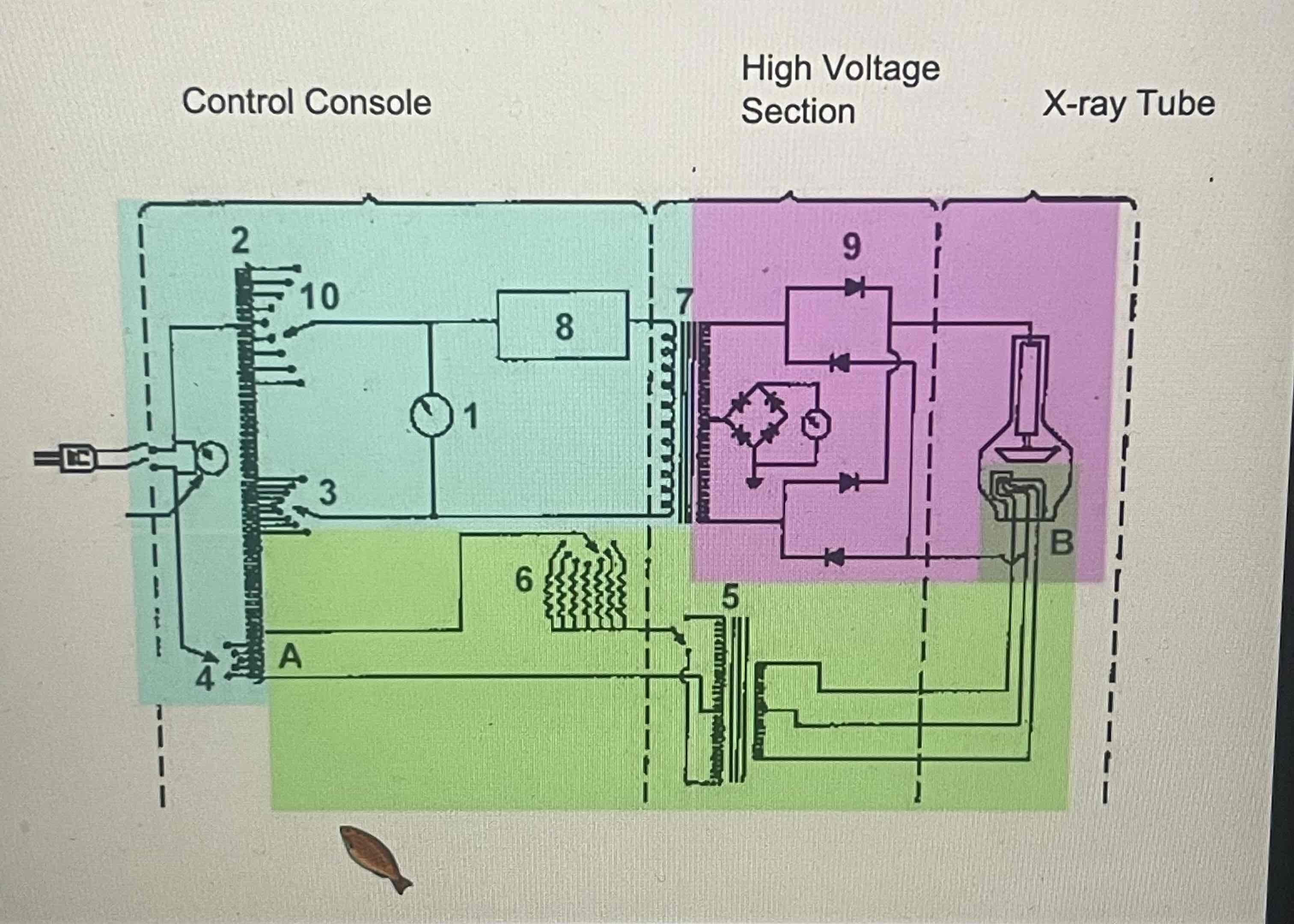
filament selector:
allows choice of small or large filament in dual-focus tubes. It is usually paired with the mA selector so that the switch to large focal occurs automatically when higher mA stations are selected.
filament transformer:
a step-down transformer which reduces the incoming voltage
to about 10 V. A typical turns ratio might be 1:20 or 0.05.
filament:
as discussed before, a tungsten/thorium coil which emits electrons when heated. The "ready" switch boosts the filament current to the level needed for thermionic emission.
x ray tube has
cathode and anode, electron flow
Rheostat introduces
desired resistance in the circuit and vary the voltage in continous manner
voltmeter
records/measures voltage
milliammeter
records/measures tube current
power line fluctuations affects
calibration
incomming voltage can vary during day generators need to
correct for changes in voltage, taht is what the line voltage compensation do
Generator
Responsible for increasing the output voltage from the autotransformer to the kVp necessary for the production of x-rays
High-voltage transformer (step-up)
Increases the voltage from volts to kilovolts (V—> kVp)
Filament transformer (step- down)
Increases the amperage from mA to A (mA——> A)
Components of the Radiographic Unit are
Creating X Rays
X-ray Tube Construction
Operating Console
Automatic Exposure Control
Manual Exposure Controls
Beam Restriction Devices/ Grid
Image Receptors
Fluoroscopy Equipment
Rectification System
Converts the alternating electrical current from “the grid” to a direct current (AC to DC)
Ensures that the electrons flow from the cathode to the anode only
Half-wave rectifiers do not allow the voltage to swing negatively during the cycle, but this creates a period of time where there is no electrical current
The x-ray tube emits x-rays for only ½ of the exposure time, or 60 times a second
Full-wave rectifiers also do not allow the voltage to swing negatively, but during the part of the cycle where the voltage swings negatively, the voltage instead swings positively. Therefore there are no gaps in the electrical current
The x-ray tube emits x-rays throughout the exposure time, or 120 times a second
Step down transformer Reduces voltage. Remember that voltage is
coming from the autotransformer at 220 volts, but must be dropped
down to
12 volts
Current is also reduced in the
filament tranformer
Starting at the autotransformer
Voltage from the autotransformer goes to the mA selector
The section of mA on the console determines the mA selector inside the
circuit
Based on the drawing of the mA selector, can anyone tell me what
property the mA selector has?